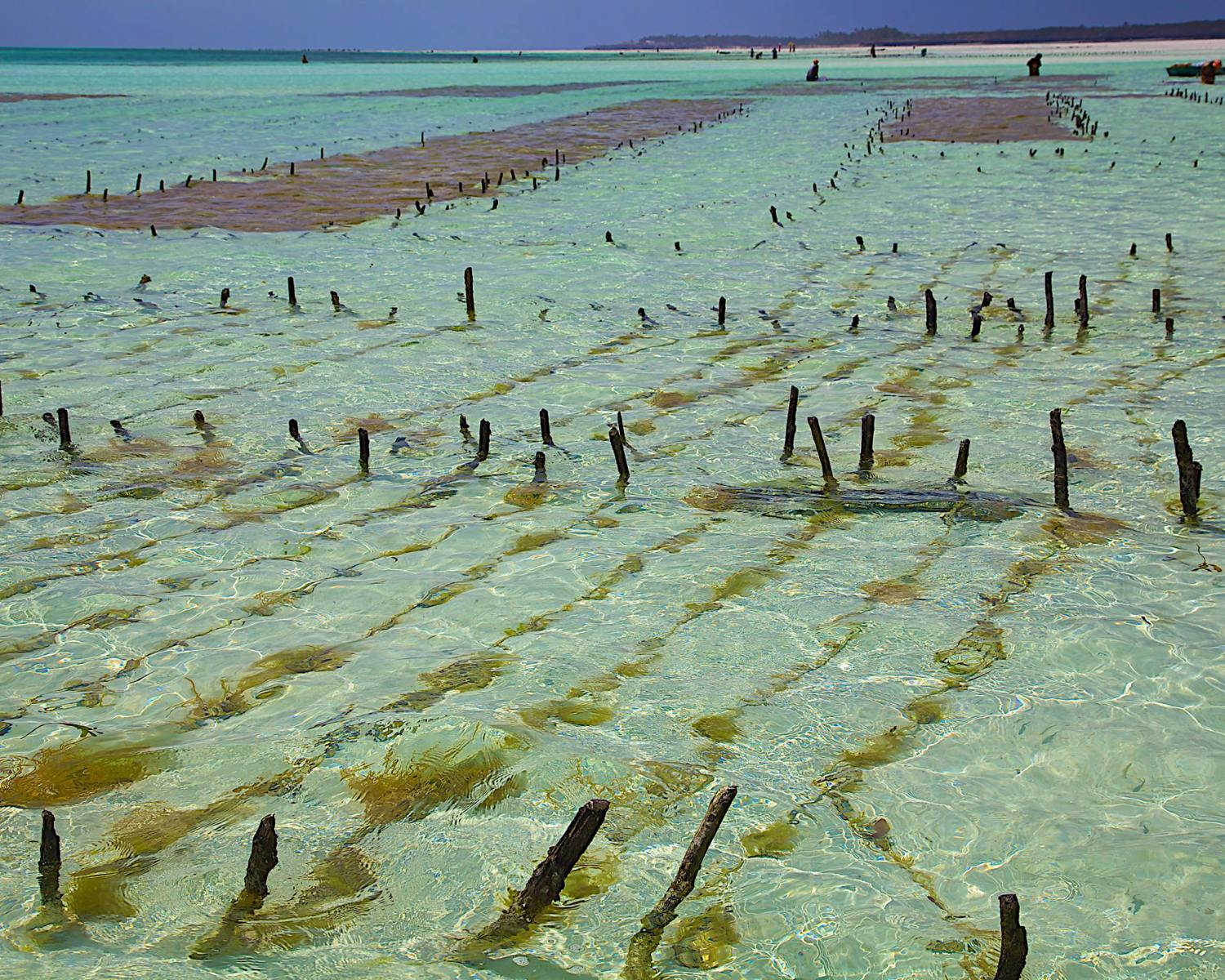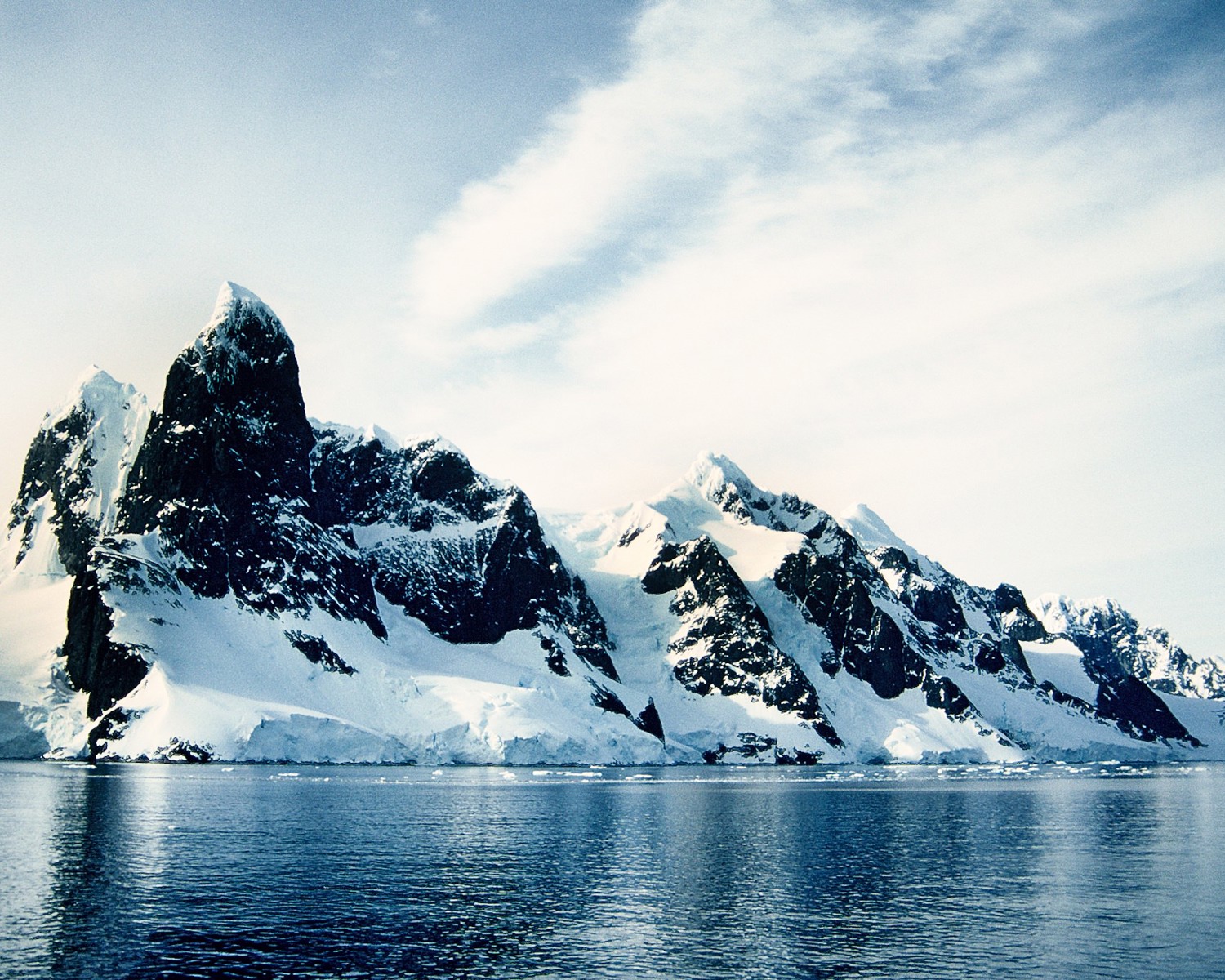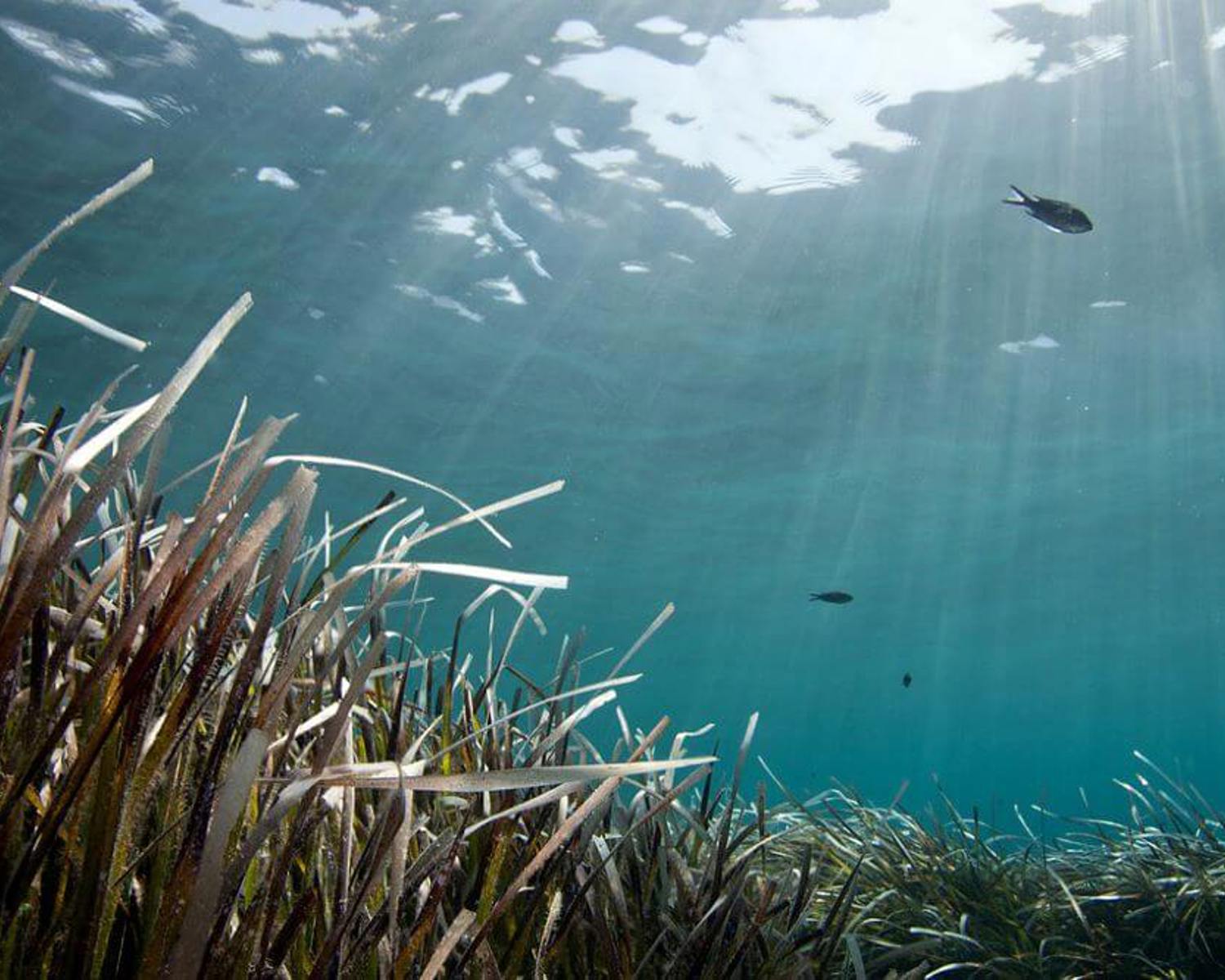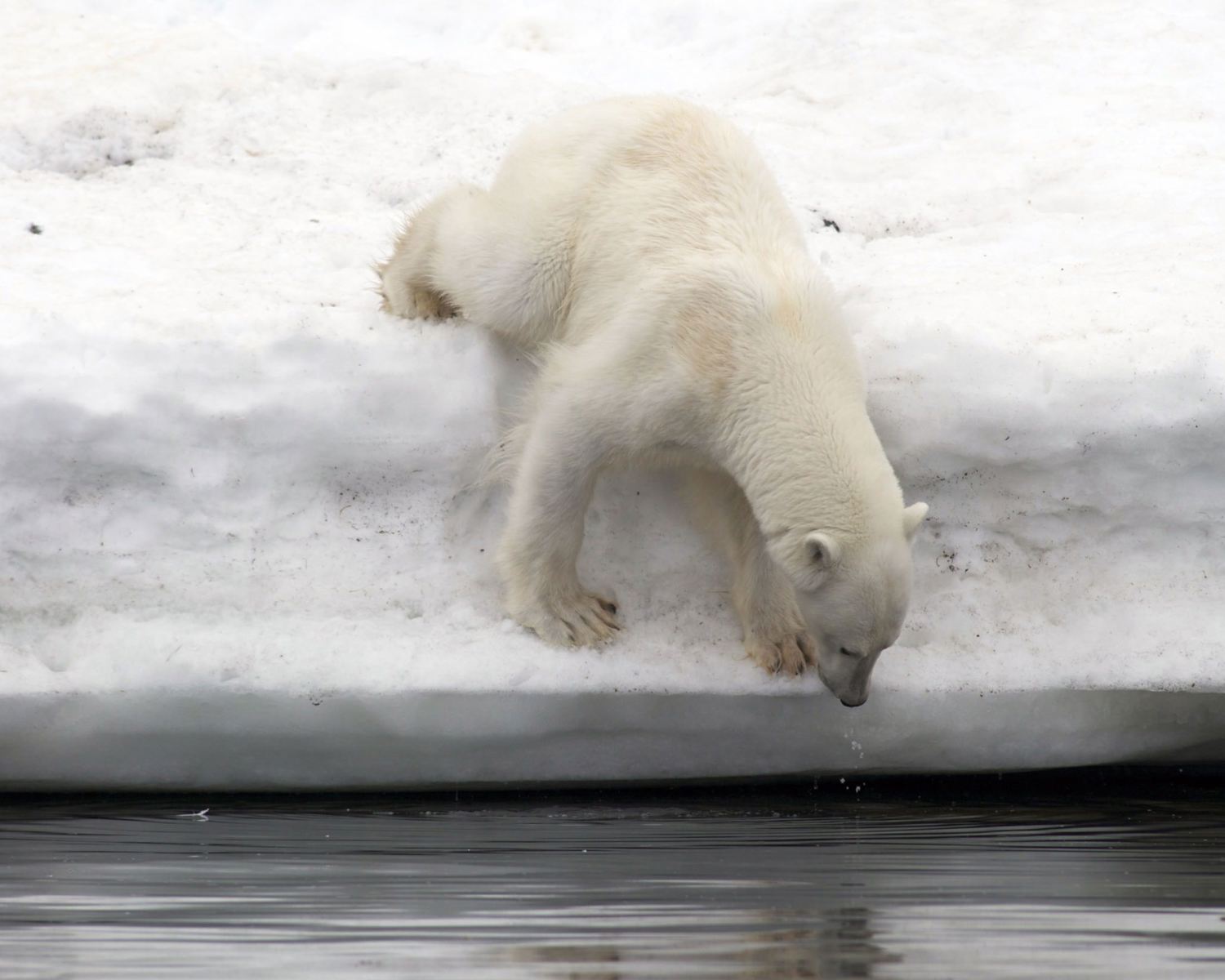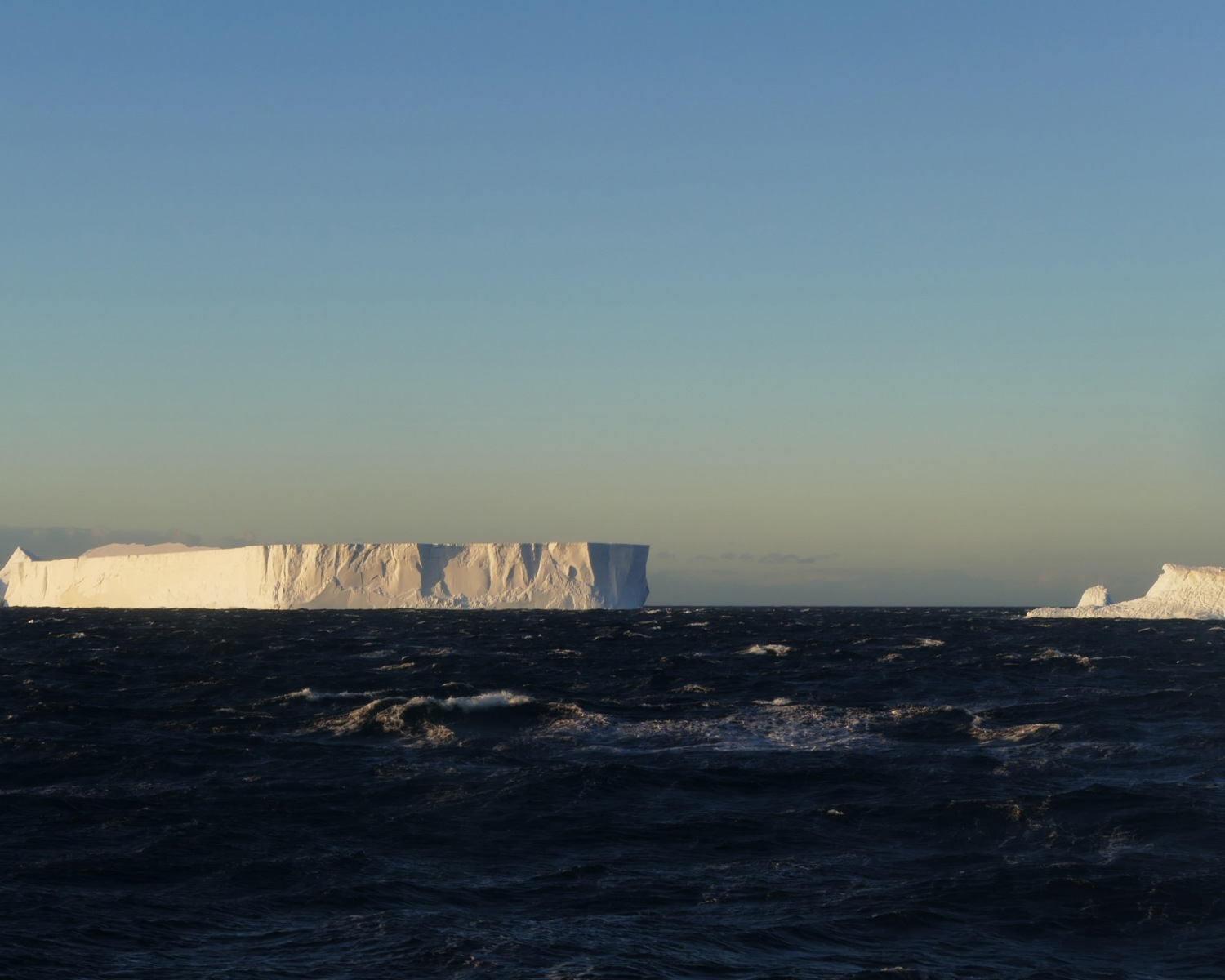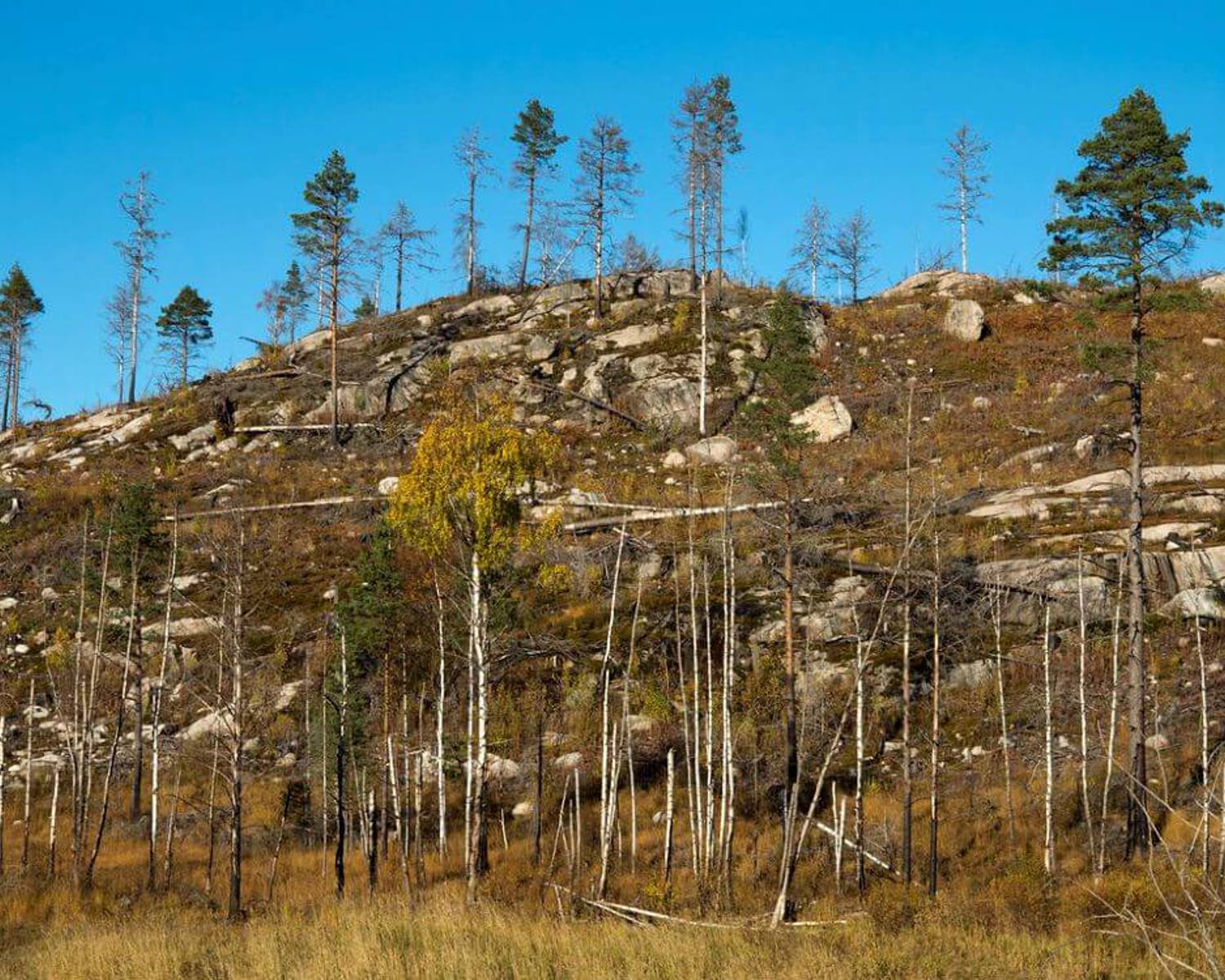Arctic Marine Cloud Brightening
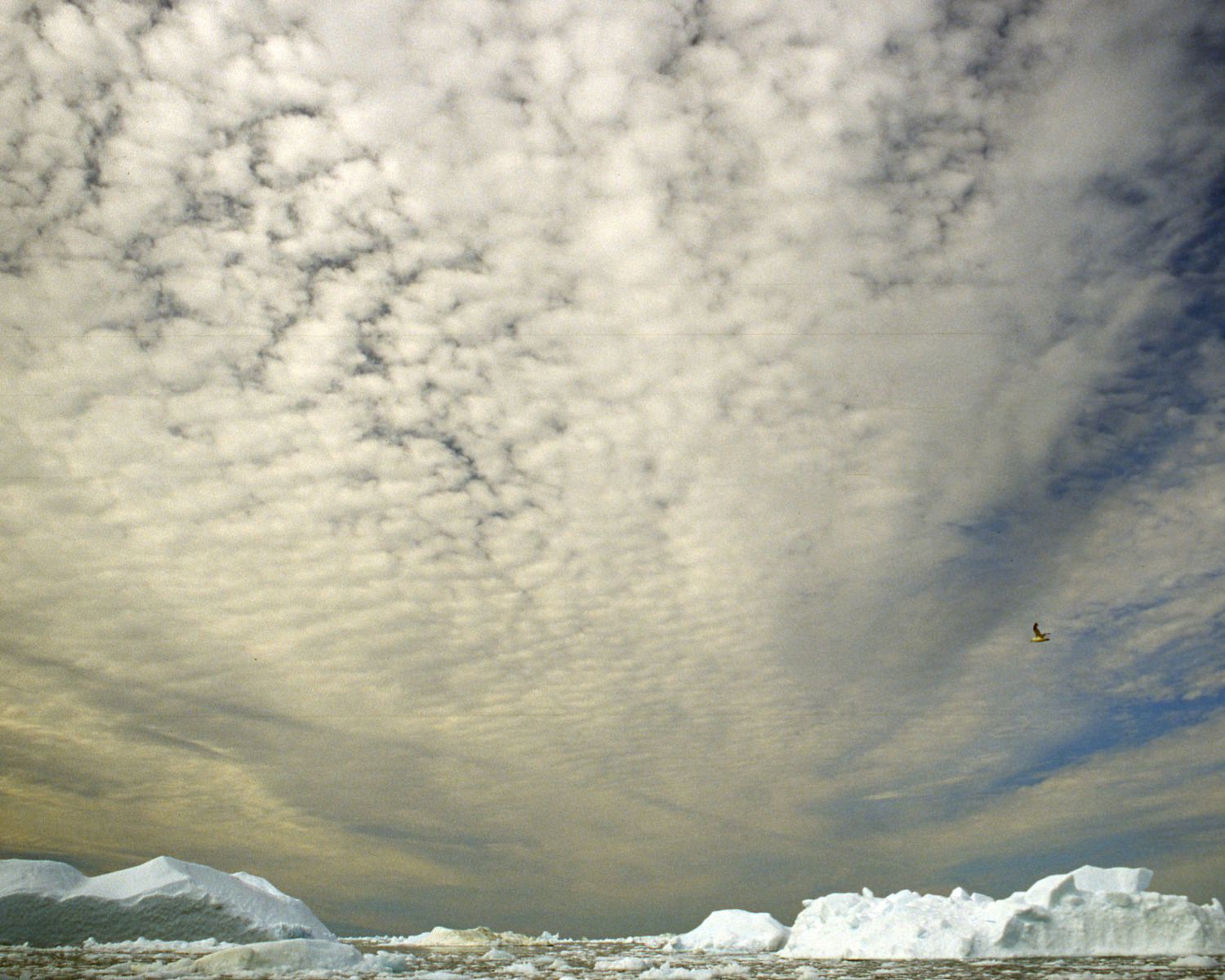
Roughly one-third of the incoming solar radiation is directly reflected back into space by the Earth’s atmosphere and surface albedo. Clouds play an important role in this, although their role is double as water droplets can also interfere with outgoing longwave radiation, thereby contributing to the greenhouse effect. Over open water clouds can make a particularly big difference as the albedo of the water is below 0.1, thereby absorbing most of the sun’s energy.
Arctic Marine Cloud Brightening (MCB) seeks to increase the albedo over the Northern oceans, which receive near constant sunlight during summer, by increasing the amount, lifetime, and reflectivity of clouds over them. MCB makes use of the Twomey effect (Twomey 1977), which stipulates that more and smaller water droplets will reflect more incoming solar radiation than fewer larger droplets (Latham et al. 2012). Since clouds form when water droplets accumulate around small airborne particles, the idea is to inject very small particles into stratocumulus clouds. Apart from increasing the albedo of the cloud, they also might lengthen the lifespan of clouds. The aerosols used for MCB are generally conceived to be salt particles that remain from seawater that is sprayed up into the air. Although increased cloud coverage would also reduce the amount of energy radiated out into space in summer, the reduction in incoming radiation is said to lead to a net cooling effect (Latham et al. 2014). In winter MCB would be halted, as there would be no energy to reflect.
Analysis overview

Technological Readiness Level (TRL)
Low 1
That aerosols contribute to cloud formation has long since been observed in the formation of ship tracks of normal ocean vessels (Hobbs et al. 2000), and studies on such “inadvertent” MCB provide valuable analogues for MCB (Patel and Shand 2022). In 1990 Latham already came up with the idea to use specially designed boats for this. This idea has since then developed in several research programs, including lab experiments (Cooper et al. 2014). In 2014, Neukermans et al. designed a spray device that would use the salt from seawater. As an alternative distribution method, Claudel et al. (2023) have recently suggested using unmanned aerial vehicles (UAVs) to seed clouds.
Currently, Australian scientists are conducting research to determine whether it might be possible to use MCB to reduce coral bleaching (Latham et al. 2013) and cool the waters around the Great Barrier Reef (Tollefson 2021; for a research project, see https://gbrrestoration.org/program/cooling-by-cloud-brightening/). A novel research project by the Cambridge Centre for Climate Repair and Delft University will also specifically examine the relevance of MCB for attempts to refreeze the Arctic.
The advocacy group Silver Lining’s 2023 report Near-term Climate Risk and Intervention suggested that 4- to 5-year research programs working on modeling, technical, and outdoor experiments could significantly advance MCB, though the feasibility of such a timeline is questionable. The IPCC AR6 WG1 notes that many uncertainties remain around MCB, especially since climate models do not represent the relevant cloud processes well (IPCC 2021, chapter 4). Hoffmann and Feingold (2021), for example, found that small differences in particle seeding size could have significant impacts on the effect of MCB.
Technological Readiness Level (TRL)
A technology with a TRL of 1-3: TRL 1 – Basic; TRL 2 – Concept formulated; TRL 3 – Experimental proof of concept

Scalability
Medium 2
Advocates of Arctic MCB envision large unmanned fleets of vessels operating throughout the season, but for now, these ships only exist on the drawing board, and it is uncertain whether the measure would be scalable (National Research Council 2015). Wood (2021) estimates that 10,000 to 100,000 vessels would need to operate ‘over the majority of the 54 % of the Earth's surface that is over ocean and remote from land’ to compensate for the forcing caused by a doubling of atmospheric CO2. Moreover, the IPCC AR6 Working Group 1 report cautions that MCB requires the presence of a specific type of cloud (IPCC 2021, chapter 4). It might be that MCB could also be effective in areas regardless of clouds, due to the radiative effect of the aerosols themselves (Ahlm et al. 2017). The Mahfouz et al. (2023) coupled model study recently highlighted the need to better understand these interactions between aerosols and solar radiation to determine the effectiveness of MCB. Manshausen et al. (2022) note that invisible ship tracks create significant radiative forcing. This implies that MCB could potentially exhibit stronger and earlier detectable impacts on climate than previously expected.
Scalability
Physically somewhat scalable; linear efficiency

Timeliness for near-future effects
High 3
The previously mentioned Silver Lining Report (2023) is very optimistic about the potential of MCB. However, the absence of modeling results and the current lack of means for large-scale distribution raise doubts.
Timeliness for near-future effects
Implemented in time to make a significant difference

Northern + Arctic potential
High 3
Many studies show that MCB could cause significant cooling over the Arctic. The Parkes et al. (2012) model study shows that polar MCB would allow significantly more sea ice to remain in a double CO2 world. Likewise, Latham et al. (2012) also found MCB ‘significantly reduces sea-ice fraction loss during the summer months’. Furthermore, Latham et al. (2014) found that MCB might help stabilize the West Antarctic ice sheet, and could also be a tangible way to cool surrounding permafrost areas and limit methane release from its thaw (see methane measures). The Kim et al. (2020) model study found that MCB could produce significant cooling over East Asia, and could restore sea ice in the Sea of Okhotsk. Mahfouz et al. (2023) also show that MCB could be effective in cooling Arctic temperatures.In comparison to other measures, Zhao et al. (2020) posit that MCB has several climate benefits over surface albedo modification (see Marine Surface Albedo Modification).
Northern + Arctic potential
Very detectable impacts in the Arctic, above the global average; technology ideally/preferably located here

Global potential
High 3
Multiple model studies have shown that MCB could cool the oceans and lead to regional cooling, but it is unsure how effective MCB could be in lowering global temperatures (National Research Council 2015). In their large model ensemble study, Stjern et al. (2018) found that MCB would lower temperatures by −0.96K relative to RCP4.5. A review by Lawrence et al. (2018) found large differences in potential cooling of MCB that ranged from 0.8 to 5.4 W/m2. The IPCC AR6 Working Group 1 report gives 1–5 W/m2 as the global mean radiative forcing potential (IPCC 2021, chapter 4) but expresses low to medium confidence in the reported forcing numbers due to a lack of understanding of the relevant warming processes (IPCC 2021, chapter 6). Hirasawa et al. (2023) suggest that an AI Model like the one they used could optimize MCB forcing patterns.
Global potential
Major impacts detected

Cost - benefit
Cost-effective 3
The costs of operationalising MCB at scale are still largely unknown but will likely be low in comparison to the projected benefits and costs associated with inaction. The National Research Council estimated logistical costs of around USD 5 million per week to produce 0.01W/m2 (NASEM 2015). In an interview with the Guardian, David Kind gives a rough estimate that an effective Arctic MCB fleet of 500 to 1000 vessels would cost up to £40bn, with subsequent annual continuation costs of around £10bn (Anthony 2022).
Cost - benefit
Low investment cost compared to the avoided damage cost (e.g., a few %) and/or inexpensive relative to other measures with similar impact

Environmental risks
Some risk 2
Like other solar radiation management (SRM) measures, MCB could impact precipitation patterns and the hydrological cycle (IPCC 2021, chapter 4). In their large model ensemble study, Stjern et al. (2018) found that MCB would reduce global precipitation by −2.35%. Bala et al. (2012) found equally important effects, although these would be less impactful than those of land-based albedo changes.
The National Research Council report states that MCB might reduce light availability thereby affecting weather patterns and local ecosystems through reduced photosynthesis (NASEM 2015) and having an impact on ocean circulation and carbon sequestration (Partanen et al. 2016; Lauvset et al. 2017). Horowitz et al. (2020) found that sea salt aerosol distribution by MCB would decrease tropospheric ozone and extend methane lifetime, and although the resulting radiative forcing is minimal, it could also influence air quality.
The inherent patchiness of MCB (i.e., it is not done over land) means that there will be large gradients in radiative forcing. In simulations of global ocean brightening, these radiative changes induce large impacts on downstream precipitation and clouds (Kravitz et al. 2018). Few or no global analyses of teleconnection impacts from localized MCB have been done (Ricke et al. 2021).
MCB could have certain beneficial effects. Although claims from proponents like Kevin Lister and Sev Clarke of technology firm Winwick Business Solutions, are probably too optimistic when they hint at the possibility of MCB to 'influencing where, when, and how much precipitation occurs downwind'. Parkes et al. (2015) found MCB and other geoengineering methods could reduce crop failure rates, and Latham et al. (2012b) showed it could weaken hurricanes. Moreover, Hirasawa et al. (2023) suggest AI models could potentially be used to reduce the negative side effects of MCB.
Environmental risks
More widespread and possibly regional impacts that extend beyond the immediate solution deployment location

Community impacts
Unknown 0
Diamond et al. (2022) recommend 'collaboration between physical scientists, ecologists, social scientists, and ethicists' to explore potential risks to local communities. It could be, for example, that reduced bioproductivity (see Environmental Risks above) might lead to local fish stocks decline, thereby detrimentally affecting local and indigenous communities and the international fishing industry.

Ease of reversibility
Easy 3
The effect of MCB would only last a couple of days and would, therefore, be relatively straightforward to reverse.
Ease of reversibility
Easily reversible naturally

Risk of termination shock
High risk 1
The C2G2 risk analysis report on solar radiation management (SRM) (Felgenhauer et al. 2022) states clearly that, 'A sudden and sustained termination of large amount of Stratospheric Aerosol Injection (SAI) or MCB under a high greenhouse gas emission background would cause a rapid increase in temperature and precipitation at a rate that far exceeds that predicted for future climate change without SRM.' Parker and Irvine (2018) point out that the short time before the effect of MCB wears off would not leave much time to restore the measure in comparison to SAI, whose stratospheric aerosols have a far longer lifetime.
Risk of termination shock
High or very significant termination shock or damage

Legality/governance
Challenging 2
Cloud seeding under domestic regulation is already widely practices, and as the MCB experiments in Australia show, it can be done without international consultation.The Carnegie Climate Governance Initiative brief on SRM (Felgenhauer et al. 2022), states that 'there are no measures, other than soft power, that would stop either researchers or states from taking forward field trials or climate-scale deployments'. They therefore suggest 'early discussions about how these technologies might be governed' since policy makers do not know enough about the technology to make adequate decisions.
Legality/governance
Fits within existing structures to a certain degree, but some policy changes are needed to deploy at scale

Scientific/media attention
High 3
Scientific/media attention
Numerous scientific papers with substantial funding and ongoing research groups; significant media attention and "hype"; many companies exploring commercialization options
References
Ahlm, L., Jones, A., Stjern, C. W., Muri, H., Kravitz, B., & Kristjánsson, J. E. 2017. Marine cloud brightening–as effective without clouds. Atmos. Chem. Phys. 17(21): 13071-13087. https://doi.org/10.5194/acp-17-13071-2017
Anthony, A. 2022. Melting point: could ‘cloud brightening’ slow the thawing of the Arctic? The Guardian. 27 Nov. theguardian.com/environment/2022/nov/27/melting-point-could-cloud-brightening-slow-the-thawing-of-the-arctic
Cooper, G., Foster, J., Galbraith, L., Jain, S., Neukermans, A., Ormond, B. et al. 2014. Preliminary results for salt aerosol production intended for marine cloud brightening, using effervescent spray atomization. Phil. Trans. R. Soc. A: Mathematical, Physical and Engineering Sciences. 372: 20140055. https://doi.org/10.1098/rsta.2014.0055
Diamond, M. S., Gettelman, A., Lebsock, M. D., McComiskey, A., Russell, L. M., Wood, R., and Feingold, G. 2022. To assess marine cloud brightening's technical feasibility, we need to know what to study—and when to stop. Proceedings of the National Academy of Sciences. 119(4), e2118379119. https://doi.org/10.1073/pnas.2118379119
Felgenhauer, T., Bala, G., Borsuk, M., Brune, M., Camilloni, I., Wiener, J.B., Xu, J. 2022. Solar Radiation Modification: A Risk-Risk Analysis. Carnegie Climate Governance Initiative (C2G). March, New York, NY: www.c2g2.net
Hirasawa, H., Kim, S., Mitra, P., Hazarika, S., Ruhling-Cachay, S., Hingmire, D. et al. 2023. Accelerating exploration of Marine Cloud Brightening impacts on tipping points using an AI implementation of fluctuation-dissipation theorem. arXiv preprint. https://doi.org/10.48550/arXiv.2302.01957
Hoffmann, F. and Feingold, G. 2021. Cloud microphysical implications for marine cloud brightening: The importance of the seeded particle size distribution. J. Atmos. Sci. 78(10), 3247-3262. https://doi.org/10.1175/JAS-D-21-0077.1
Horowitz, H. M., Holmes, C., Wright, A., Sherwen, T., Wang, X., Evans, M. et al. 2020. Effects of sea salt aerosol emissions for marine cloud brightening on atmospheric chemistry: Implications for radiative forcing. Geophysical Research Letters. 47(4), e2019GL085838. https://doi.org/10.1029/2019GL085838
IPCC. 2021. Climate Change 2021: The Physical Science Basis. Contribution of Working Group I to the Sixth Assessment Report of the Intergovernmental Panel on Climate Change. [Masson-Delmotte, V., P. Zhai, A. Pirani, S.L. Connors, C. Péan, S. Berger et al. (eds.)]. Cambridge University Press, Cambridge, United Kingdom and New York, NY, USA. https://doi.org/10.1017/9781009157896
Kim, D. H., Shin, H. J. and Chung, I. U. 2020. Geoengineering: Impact of marine cloud brightening control on the extreme temperature change over East Asia. Atmosphere, 11(12): 1345. https://doi.org/10.3390/atmos11121345
Kravitz, B. P.J. Rasch, H. Wang, A. Robock, C. Gabriel, O. Boucher, J.N.S. et al. 2018 The climate effects of increasing ocean albedo: An idealized representation of solar geoengineering Atmos. Chem. Phys. 18: 13097-13113. https://doi.org/10.5194/acp-18-13097-2018
Kravitz, B., Wang, H., Rasch, P. J., Morrison, H., and Solomon, A. B. 2014. Process-model simulations of cloud albedo enhancement by aerosols in the Arctic. Phil. Trans. R. Soc. A. 372(2031): 20140052 https://doi.org/10.1098/rsta.2014.0052
Latham, J., Bower, K., Choularton, T., Coe, H., Connolly, P., Cooper, G. et al. 2012a. Marine cloud brightening. Phil. Trans. R. Soc. A: Math. Phys. Eng. Sci. 370(1974): 4217-4262. https://doi.org/10.1098/rsta.2012.0086
Latham, J., Gadian, A., Fournier, J., Parkes, B., Wadhams, P., and Chen, J. 2014. Marine cloud brightening: regional applications. Phil. Trans. R. Soc. A. 372(2031): 20140053. https://doi.org/10.1098/rsta.2014.0053
Latham, J., Parkes, B., Gadian, A., and Salter, S. 2012b. Weakening of hurricanes via marine cloud brightening (MCB). Atmosph. Sci. Lett. 13(4): 231-237. https://doi.org/10.1002/asl.402
Manshausen, P., Watson-Parris, D., Christensen, M.W. et al. 2022. Invisible ship tracks show large cloud sensitivity to aerosol. Nature. 610: 101–106. https://doi.org/10.1038/s41586-022-05122-0
National Academies of Sciences, Engineering, and Medicine. 2015. Climate Intervention: Reflecting Sunlight to Cool Earth. Washington, DC: The National Academies Press. https://doi.org/10.17226/18988.
Parkes, B., Challinor, A. and Nicklin, K. 2015. Crop failure rates in a geoengineered climate: impact of climate change and marine cloud brightening. Environ. Res. Lett. 10(8): 084003. https://doi.org/10.1088/1748-9326/10/8/084003
Parkes, B., Gadian, A. and Latham, J. 2012. The Effects of Marine Cloud Brightening on Seasonal Polar Temperatures and the Meridional Heat Flux. ISRN Geophysics. 2012(142872). 7pp. https://doi.org/10.5402/2012/142872
Patel, L. and Shand, L. 2022. Toward data assimilation of ship-induced aerosol–cloud interactions. Environmental Data Science. 1: e31. https://doi.org/10.1017/eds.2022.21
Ricke, K., Ivanova, D., McKie, T. and Rugenstein, M. 2021. Reversing Sahelian droughts. Geophys. Res. Lett. 48: e2021GL093129. https://doi.org/10.1029/2021GL093129
Silver Lining. 2023. Near-term Climate Risk and Intervention: A Roadmap for Research, U.S. Research Investment, and International Scientific Cooperation. Washington, DC.https://www.silverlining.ngo/reports/roadmap-for-climate-intervention-research
Stjern, C. W., Muri, H., Ahlm, L., Boucher, O., Cole, J. N., Ji, D. et al. 2018. Response to marine cloud brightening in a multi-model ensemble. Atmos. Chem. Phys. 18(2): 621-634. https://doi.org/10.5194/acp-18-621-201
Tollefson, J. 2021. Can artificially altered clouds save the Great Barrier Reef? Nature. 596: 476–478. https://doi.org/10.1038/d41586-021-02290-3
Wood, R. 2021. Assessing the potential efficacy of marine cloud brightening for cooling Earth using a simple heuristic model. Atmospheric Chemistry and Physics. 21(19), 14507-14533. https://doi.org/10.5194/acp-21-14507-2021
Zhao, M., Cao, L., Duan, L., Bala, G., and Caldeira, K. 2021. Climate more responsive to marine cloud brightening than ocean albedo modification: A model study. Journal of Geophysical Research: Atmospheres. 126(3):e2020JD033256. https://doi.org/10.1029/2020JD033256


